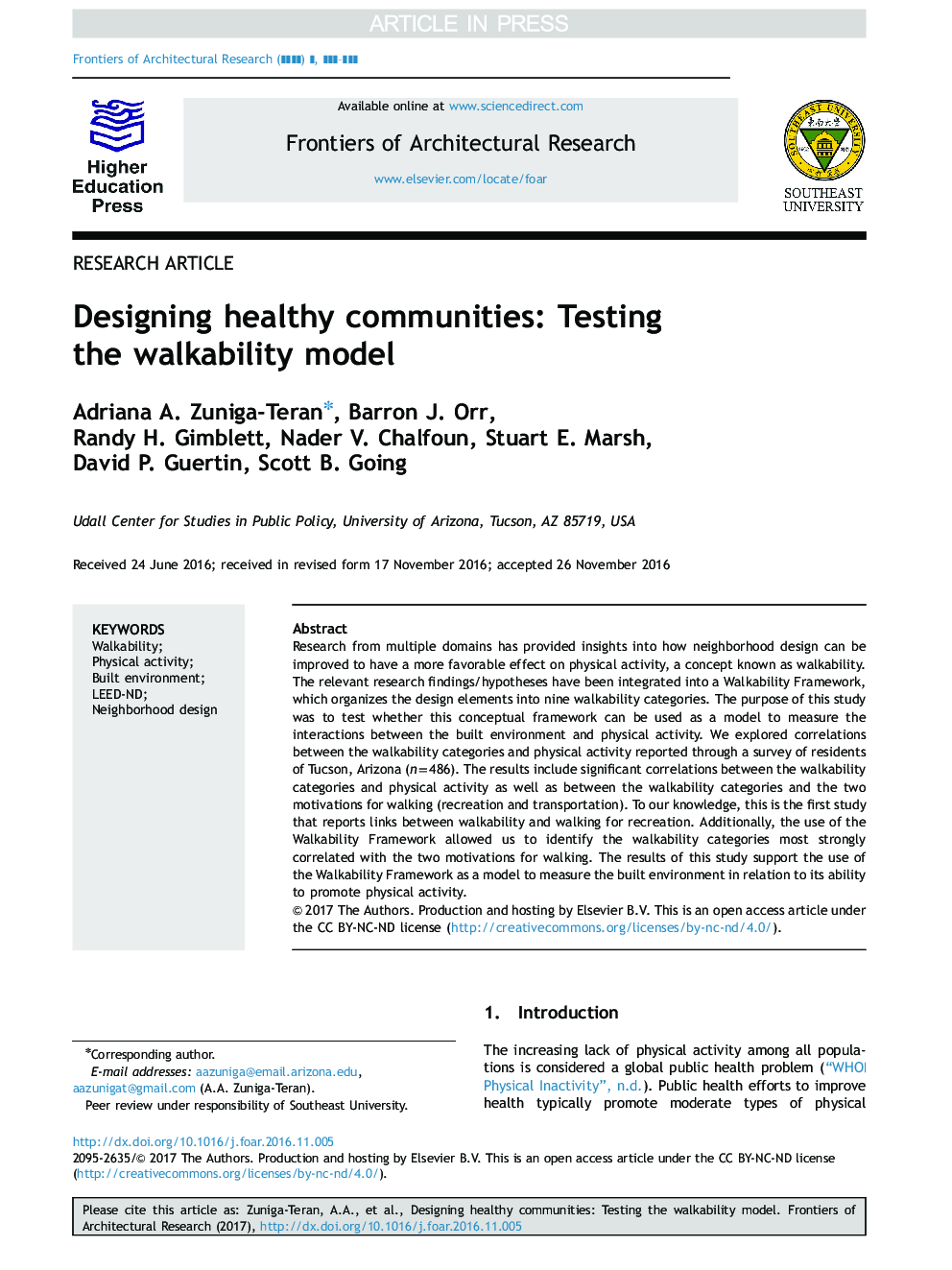| Article ID | Journal | Published Year | Pages | File Type |
|---|---|---|---|---|
| 6742572 | Frontiers of Architectural Research | 2017 | 11 Pages |
Abstract
Research from multiple domains has provided insights into how neighborhood design can be improved to have a more favorable effect on physical activity, a concept known as walkability. The relevant research findings/hypotheses have been integrated into a Walkability Framework, which organizes the design elements into nine walkability categories. The purpose of this study was to test whether this conceptual framework can be used as a model to measure the interactions between the built environment and physical activity. We explored correlations between the walkability categories and physical activity reported through a survey of residents of Tucson, Arizona (n=486). The results include significant correlations between the walkability categories and physical activity as well as between the walkability categories and the two motivations for walking (recreation and transportation). To our knowledge, this is the first study that reports links between walkability and walking for recreation. Additionally, the use of the Walkability Framework allowed us to identify the walkability categories most strongly correlated with the two motivations for walking. The results of this study support the use of the Walkability Framework as a model to measure the built environment in relation to its ability to promote physical activity.
Related Topics
Physical Sciences and Engineering
Energy
Renewable Energy, Sustainability and the Environment
Authors
Adriana A. Zuniga-Teran, Barron J. Orr, Randy H. Gimblett, Nader V. Chalfoun, Stuart E. Marsh, David P. Guertin, Scott B. Going,
